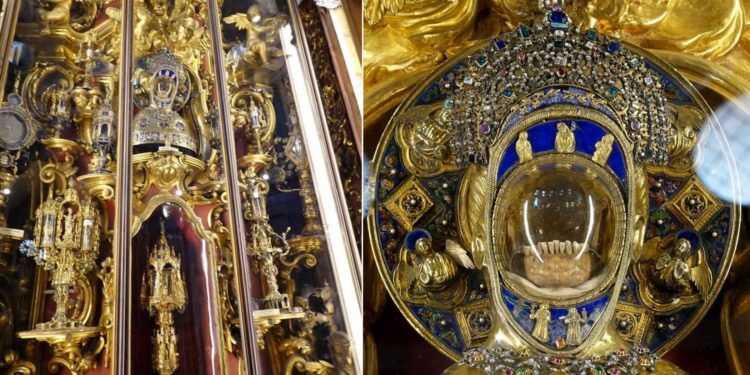According to Catholic tradition, saints who are miraculously preserved from decay give witness to the truth of the resurrection of the body and the eternal life in heaven that is to come.
“All the body had gone to ashes and bones basically, apart from the vocal apparatus, which was still wet and soft,” Conte explained.
“And so they took these parts, the tongue and the jaw, and they put them into some reliquaries. And if you go to the Basilica of St. Anthony, there is a chapel dedicated to the relics of St. Anthony and you will see them in that particular chapel.”
The Catholic Church has a long tradition of giving honor to relics, which are objects that have a direct association with the saints or with Christ himself. Relics are not worshipped but given honor — “venerated” — because of the saint’s love of and closeness to God. Those praying with relics often ask for that saint’s intercession.
The 1263 exhumation was carried out by the then-minister general of the Franciscans, St. Bonaventure, because the Franciscans were moving the saint’s body to a new and larger church. Conte said that when Bonaventure found the tongue, he said: “‘This is really a miracle. God wants us to know that St. Anthony was really the messenger of God’s love.’”
Today, the day that St. Anthony’s tongue was found is celebrated with Masses at the basilica that bears his name in Padua, northern Italy.
Credit: Source link




